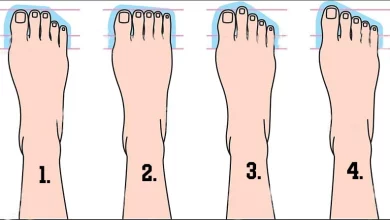THE REAL REASON WHY YOUR STOMACH IS BLOATED AND HOW TO GET RID OF IT OVERNIGHT! – Wake Up Happy
what is crohn’s disease?
Crohn’s disease is a chronic inflammatory bowel disease affecting all its layers.
The most common complications are irreversible changes (narrowing of the intestinal segments, fistulas).
Also, this disease is characterized by numerous extraintestinal lesions.
The prevalence of Crohn’s disease in different countries of the world ranges from 50 to 150 cases per 100,000 population.
The first manifestations of the disease, as a rule, appear at a young age (15-35 years), and it can be both intestinal and extraintestinal manifestations.
Causes of Crohn’s disease:
The causal factor of the disease has not been established.
The provoking role of viruses, bacteria (for example, measles virus, mycobacterium paratuberculosis) is assumed.
The second hypothesis is related to the assumption that some food antigen or non-pathogenic microbial agents can cause an abnormal immune response.
The third hypothesis states that the role of the provocateur in the development of the disease is played by autoantigens (i.e., the body’s proteins) on the patient’s intestinal wall.
what are the symptoms of crohn’s disease?
In Crohn’s disease, the mucous membrane of the colon is inflamed, covered with superficial ulcerations, which causes
- abdominal pain,
- impurities of blood and mucus in the feces,
- diarrhea, often accompanied by pain during defecation.
In addition, there is often a general malaise, loss of appetite, and weight loss.
The presence of Crohn’s disease can be suspected with constant or nocturnal diarrhea, abdominal pain, intestinal obstruction, weight loss, fever, night sweats.
Not only the colon, but also the small intestine, as well as the stomach, esophagus, and even the mucous membrane of the mouth can be affected.
The incidence of fistula in Crohn’s disease is from 20 to 40%.
Often develop narrowing of the intestine with subsequent intestinal obstruction, pseudopolyposis.
Extra-quick manifestations of Crohn’s disease include:
- skin manifestations,
- joint lesions,
- inflammatory eye diseases,
- diseases of the liver and biliary tract,
- vasculitis (inflammation of blood vessels),
- hemostasis disorders and thromboembolic complications,
- blood diseases,
- amyloidosis
- disorders of bone metabolism (osteoporosis – rarefaction of bone tissue).
Crohn’s disease is a recurrent or continuous disease that in 30% of cases gives spontaneous subsidence without treatment.
It happens that patients complain of pain in various parts of the abdomen, bloating, often vomiting.
This is a variant of the disease with the predominant development of small intestinal insufficiency syndrome, which occurs with the defeat of the small intestine.
how is crohn’s disease diagnosed?
open next page to continue reading….
Related Articles
-
Best Exercises To Lose Arm Fat In Two WeeksAugust 26, 2022



